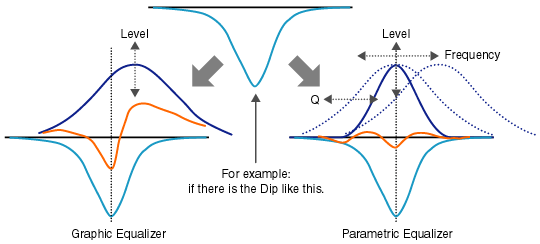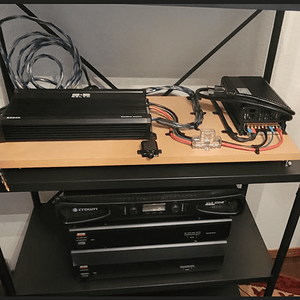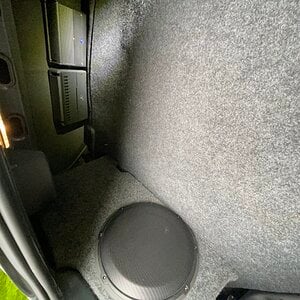Parametric just means you can choose the center frequency to be adjusted (within a given range), with graphic EQ's it's static and already chosen for you. The "Q" describes how much the frequencies on either side of the center frequency will be affected by your boosting/cutting. The higher the Q (perhaps 1.0 as opposed to 0.3), the narrower the bandwidth, meaning it will have less effect on the neighboring frequencies.
Here's a pretty decent visual of what I'm trying to articulate. The light blue curve is what needs corrected. On the left, the orange curve shows the result of the graphic EQ's compensation with static center frequencies and Q's. It takes a dip and turns it into a dip and a peak, not good. On the right, the orange curve shows how the parametric EQ can be adjusted to target the problem frequency and with the slightly narrower Q adjustment, it has less of an impact on the areas that don't really need it. The result is a lot less ripple.



